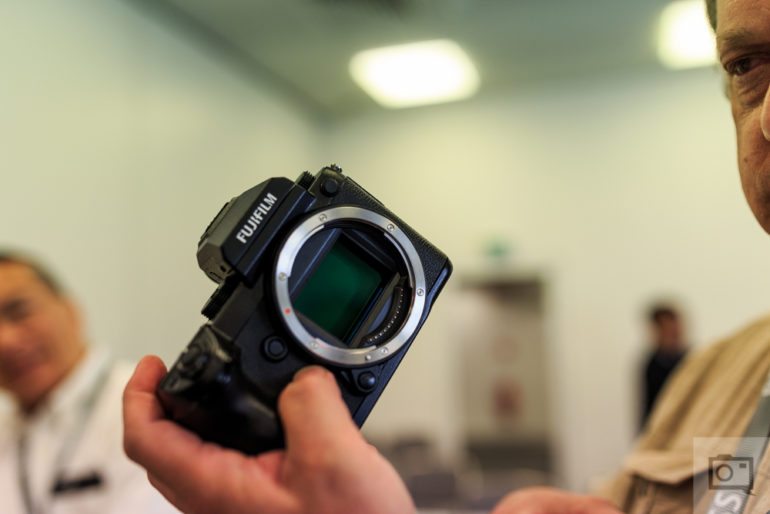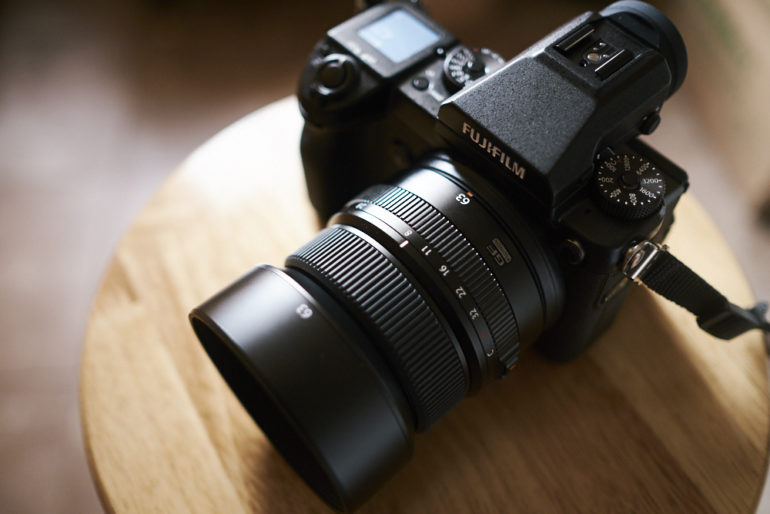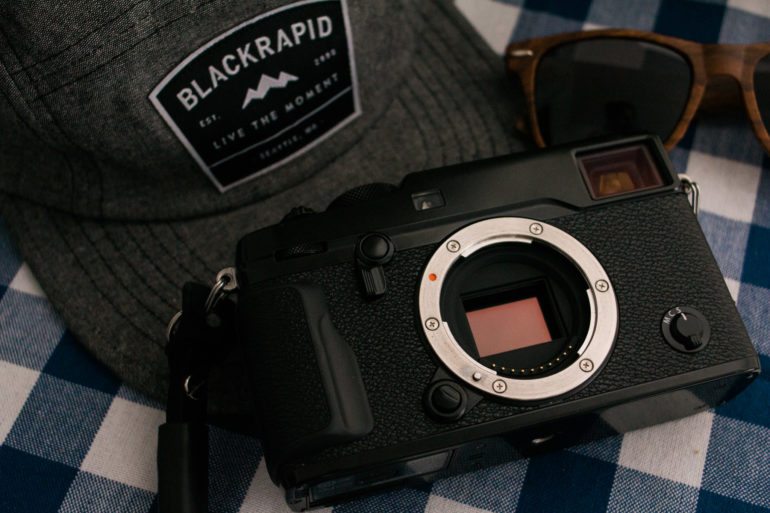Last Updated on 06/26/2018 by Mark Beckenbach
There have been many reports over the last year regarding the supposed Fujifilm GFX 50R; here is what we would like to see.
You have all no doubt heard about Fujifilm’s GFX mirrorless medium format system, and its launch body, the GFX 50s (read our GFX 50s Review). The camera is no larger than your average professional-level DSLR but it packs an impressive 51.4 megapixel medium format sensor. The only real downside to the system is that it’s rather expensive, but some reports from the last year have indicated that it’s possible a more affordable option may be coming from Fujifilm at Photokina in the form of a newly minted Fujifilm GFX 50R.
As always with any reporting on unannounced products, you should not take any specs or capabilities to heart until they are confirmed by the manufacturer. But that doesn’t stop us from talking about what we would like to see from an upcoming product, and that is exactly what we plan to do here today with the Fujifilm GFX 50R.

The biggest point about the GFX 50R that has been a constant piece to the puzzle since reports first started surfacing about this camera is its design. According to virtually all of the reports the GFX 50R will feature a design more like the X-Pro2 or X-E3 in the X-Series. In other words, this will reportedly have a more rangefinder-esq design. This is a huge selling point for us; we tend to prefer the rangefinder aesthetic anyway, and it would also make sense as a great way to cut down on some of the size/bulk of the original GFX 50s. It would be, and this will likely be dating us quite bit, a modern version of the famous Texas Leica (The Fujifilm GW690 – which we have reviewed), a medium format 120 film camera from back in the day that featured rangefinder design.
Now, the real question here is will Fujifilm implement a larger version of the X-Pro2, with its unique hybrid viewfinder, or if they will take the X-E3 approach and just go with the simpler EVF without the optical option. We can see the benefits to both avenues, and there could definitely be some technical hurdles to implementing the hybrid viewfinder given the massive size of most of the GF lenses, but there is just something special about being able to flip between an optical view and an electronic view that we love about the X-Pro2. We think it would also be another excellent way to differentiate the GFX 50R from its other competitors in the medium format space. That said, a more X-E3 style design with just an EVF and no OVF would make sense from a cost-cutting perspective, which is also a reported goal of Fujifilm for the GFX 50R. So, at this point, we could see the viewfinder situation going either way.

Which brings us nicely into a discussion about the pricing of this camera, as this has also been the subject of several reports lately. According to some of them, one of the goals of Fujifilm with the GFX 50R is to offer the camera at a significantly reduced price to that of the original GFX 50S. Some reports have pegged the pricing as low as $3,000, which, if you are paying attention, would be an incredible $3,500 or so discount off the GFX 50S. That seems a little outside of the realm of reality in our opinion, that is unless Fujifilm either guts the capabilities in the GFX 50R or manages to get a killer deal on components. That said, let’s just hypothetically go with a price here of $3,500, which puts the GFX 50R in direct competition with most of the high-resolution, full frame cameras out there from Sony, Canon, and Nikon. But similarly to how a full frame camera has some inherent advantages over an APS-C crop sensor camera, the GFX 50R would (assuming it kept that same 51.4MP sensor of the GFX 50S) have some inherent advantages over those full frame cameras. For photographers who need that kind of resolution, the idea of being able to shoot with a medium format sensor for the cost of a full frame camera would be very enticing.
But again, it would be supremely impressive if Fujifilm manages to get their pricing down that low. It would also likely mean they had to cut corners in ways that someone spending that kind of money on a camera would not appreciate. So, let’s table the cost discussion for now.

Honestly, for us, if they took the X-Pro2 and supersized it to fit the GFX sensor, that is basically what we would like to see in the GFX 50R. Fujifilm can ditch the top screen, give us some more dials, and we would also be ok with them ditching the flip out screen in favor of a more traditional embedded touchscreen. That would also help them cut down on a lot of the bulk of the original GFX 50S.
What about you? What would you like to see in a supposed Fujifilm GFX 50R? Do you like the idea of a smaller, more affordable GFX camera? And if so, what features would you see Fujifilm hold back in order to make it more viable? Leave a comment and join the discussion.


